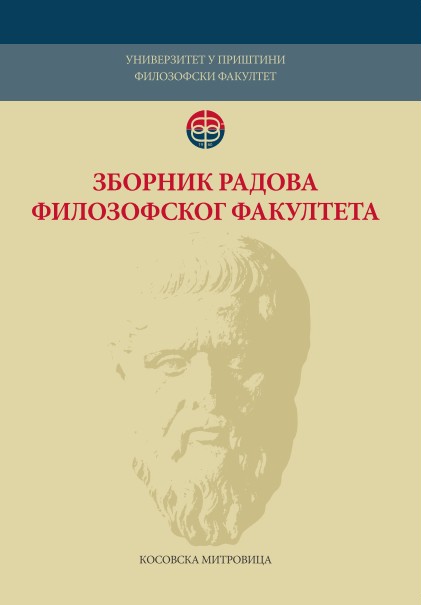Dagli anni settanta a oggi: i nuovi orizzonti della linguistica cognitiva e la sua applicazione in CLIL, SLA e studi di traduzione, didattica delle lingue e letteratura
From 1970s until Present: New Horizons of Cognitive Linguistics and Its Application in CLIL, Teaching Languages and Literature, SLA and Translation Studies
Author(s): Iren BoyarkinaSubject(s): Language studies, Language and Literature Studies, Theoretical Linguistics
Published by: Филозофски факултет, Универзитет у Приштини
Keywords: cognitive linguistics; blending theory; metaphor; SLA studies; CLIL; translation; teaching
Summary/Abstract: The present paper studies some important stages of evolution of cognitive linguistics from the 1970s till present. One of the main ideas, appeared in the second half of the last century, which lies at the basis of cognitive linguistics is that language cannot be treated as a separate function of human brain but it makes and inseparable part of human cognitive abilities; language is closely intertwined with cognition. One of the most prominent manifestations of cognition is imagination, the ability to project concepts onto other concepts. This mechanism of projection (mapping) lies at the basis of the conceptual metaphor theory (CMT), introduced by Lakoff and Johnson, which became a milestone in the development of cognitive linguistics and its fundamental aspect. The paper focuses on CMT, as well as on some other theories of metaphor, which aspects were elaborated and integrated into CMT. The article also analyses the neural theory of metaphor – the next important evolutionary stage in cognitive linguistics. Facounnier and Turner further elaborated the principles of conceptual mapping and combined them with conceptual blending in the conceptual integration theory, which is also studied in the article as the mechanism explaining how human mind works. Feldman elaborated these theories to create a neural theory of language, which is considered in this paper as well. The article emphasizes that cognitive linguistics is very effective for research as well as for teaching since it provides a set of powerful tools able to enhance teaching of languages and literature (besides other subjects). The blending theory, CMT as a particular case of blending theory, as well as the neural theory of language are of particular interest not only for the human brain and mind studies but to the Artificial Intelligence studies as well. The paper observes that these and other instruments of cognitive linguistics can be successfully employed in the Second Language Acquisition studies, translation studies, CLIL, etc.
Journal: Зборник радова Филозофског факултета у Приштини
- Issue Year: 50/2020
- Issue No: 4
- Page Range: 89-102
- Page Count: 14
- Language: Italian

